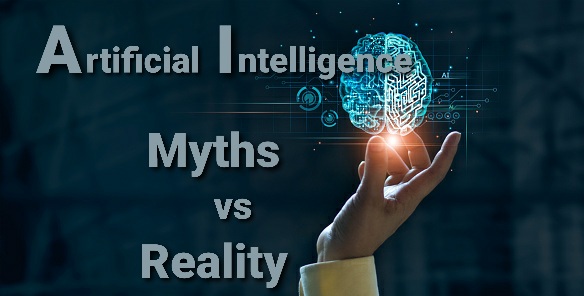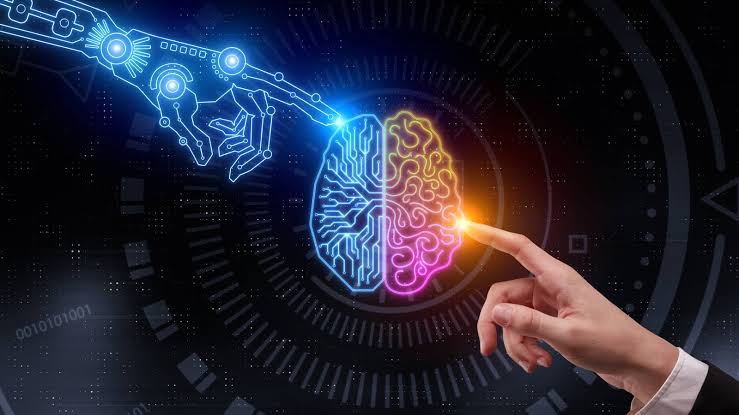
5 Artificial Intelligence Myths and the Facts Behind Them
Very few subjects in science and technology are causing as much excitement right now as artificial intelligence (AI). In a lot of cases this is good reason, as some of the world’s brightest minds have said that it’s potential to revolutionize all aspects of our lives is unprecedented.
On the other side, as with anything new, there will undoubtedly be snake-oil salesmen wanting to make a fast cash by making promises that cannot yet be kept. Others, frequently with entrenched interests, have a vested interest in promoting fear and distrust.
So, here’s a rundown of some common misunderstandings and misinformation that come up frequently when the subject of Artificial intelligence is discussed, as well as reasons why you shouldn’t necessarily believe them.

AI Myths vs AI Facts
Myth 1: AI algorithms can magically decipher all of your jumbled data.
Fact: The quality of the data is more crucial than the algorithm when it comes to AI.
Data—not just any data, but the proper data—is the most critical input for an AI tool. That is, data that is specific to a collection of use cases and an area of knowledge that is relevant to the problem being handled. Many in the technology industry incorrectly believe that an AI solution can simply be aimed at data and that advanced machine learning algorithms will give the correct response.
Information and content that has been carefully chosen and is of high quality are required by AI systems. No matter what system you choose, lousy data produces bad results. A program is an algorithm, and program require excellent data. When a system uses “machine learning,” it arrives at an answer through continual approximations and then “learns” the optimal method to get there by adjusting how it processes the input. It’s more crucial to have the appropriate data than it is to have a lot of it.
Myth 2: Artificial intelligence (AI) is smarter than humans.
Fact: AI is only as intelligent as you make it.
“We project what we would do onto AI,” McCall explained. “I believe the human brain is the smartest engine on the planet, and we will not be able to create a smarter AI than the human brain.” AI isn’t sentient, it’s not conscious, and I don’t believe it will ever surpass our intelligence.”
Artificial intelligence would not exist without the people who generate the algorithms and data that make up AI. According to McCall, “we develop it, instruct it, and give it the means to make certain decisions on our behalf.”
“In some circles, AI can be utilized to make choices faster than humans. “That doesn’t mean the decisions are always correct, smart, or produce the best results,” McCall explained. “Does AI have a social conscience?” “How do you teach AI to read a room?” you might wonder. Some choices are difficult to make.
Myth 3: Machine learning via “neural networks” enables computers to learn in the same way that humans do.
Fact: Neural nets are powerful, but they’re still a long way from matching human capabilities or achieving the complexity of the human brain.
The usage of “deep learning,” which is based on “artificial neural networks,” is one of the most interesting methods to powering AI. Computer chips can now mimic the way biological neurons learn to detect patterns thanks to this architecture. The method is being utilized to solve a variety of problems, including better language translation, fraud detection, picture recognition, and self-driving automobiles.
While neural nets are capable of solving a wide range of issues, they lack the ability to enable the creative synthesis of many thoughts and information sources that is a hallmark of human thinking.
The human brain includes more than 200 billion neurons, with each neuron forming connections with up to 10,000 other neurons. A synapse, on the other hand, is not like an on-off switch. It has the capacity to hold up to 1,000 molecular switches. The level of complexity is astounding when you consider that there are roughly 100 neurotransmitters that affect how neurons communicate. A human brain, according to one estimate, contains more switches than all of the computers, routers, and internet connections on the planet. As a result, it’s not unexpected that current technology can’t imitate human thought.
Myth 4: Artificial intelligence will eventually eliminate all jobs.
Fact: AI will primarily replace existing occupations but also creating new ones.
Many people are concerned that as artificial intelligence advances, they will be replaced by machines and lose their employment. While it is true that the advancement of artificial intelligence and automation has the potential to disrupt labor, it is not that simple. AI is not unlike any other technical advancement that has occurred throughout history. In fact, AI is expected to perform the same thing that other technical advancements have done in helping people and systems become more effective. It’s a simplification to think of this as just moving work from humans to machines.
Many prior industrial revolutions, such as the shift from agrarian to factory labor in the nineteenth century, resulted in changes in employment. However, despite this, the number of jobs has stayed quite constant. It’s likely that the rise of AI and automation could create a productive environment in which humans will be more efficient and spend less time doing manual jobs.
Myth 5: The outcome is determined by the modelling.
Fact: There’s no way to know for sure.
All AI projects start out as pilots. You may achieve outstanding results during the testing process, but when you put your model into production, it turns out to be significantly less accurate. Because AI and machine learning models must be trained on data, and that data must be indicative of the real data, or the results would be skewed.
It’s also worth noting that your AI model’s training is never complete. When you utilize your model in the actual world, its accuracy starts to decline. The rate of decline will be determined by how quickly real-world data changes (and customer tastes can shift quickly), but your model will eventually need to be retrained with new data that reflects the changing condition of the world.
